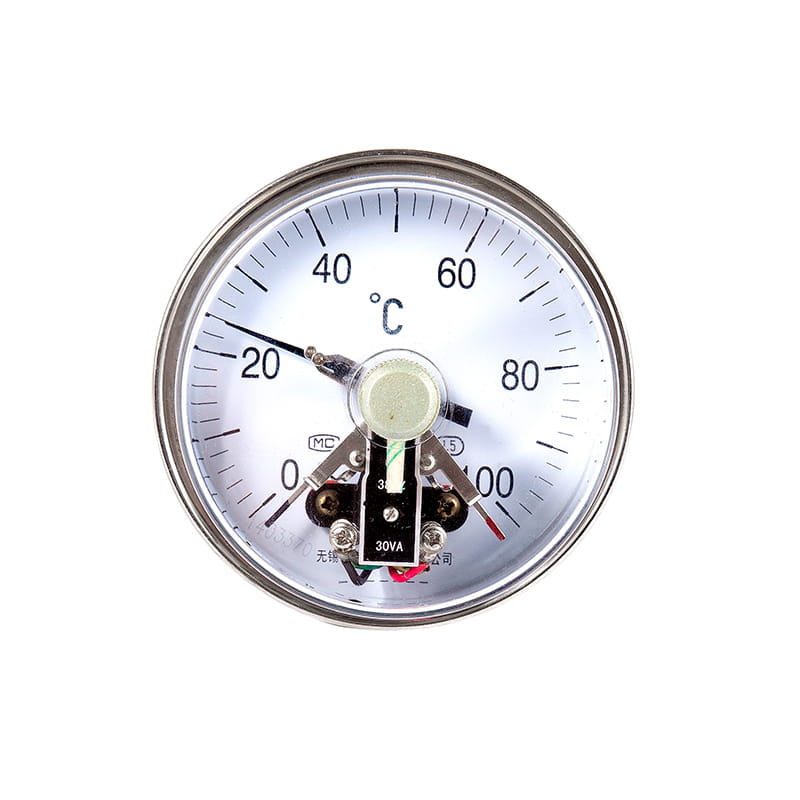Y series general stainless steel pressure gauge
Cat:Pressure Gauge
◆ Model: Y40 Y50 Y60 Y75 Y100 Y150 Y200 Y250◆ Use: This series of instruments is suitable for measur...
See DetailsIn the power system, Temperature Instrument plays a key role in ensuring the safe operation of equipment and improving system reliability. In order to ensure the accuracy of temperature measurement and the long-term stable operation of the instrument, its installation location and protection measures have a series of special requirements. The following is an explanation from the aspects of installation location selection, environmental adaptability, safety protection and maintenance convenience.
1. Special requirements for installation location
Close to heat source, reflect the real temperature
The temperature instrument should be installed as much as possible in a position that can accurately reflect the real operating temperature of the measured equipment. For example, in a transformer, the temperature measuring element should be close to the hot spot area of the winding; in a cable system, it should be arranged in the middle section of the cable or the area of maximum heat accumulation to reflect the temperature of the highest temperature rise point.
Avoid thermal interference and electromagnetic interference
When selecting the installation point, avoid the radiation effect of strong heat sources and strong electromagnetic field interference of power equipment. For example, the temperature sensor should avoid direct exposure to sunlight or near high-frequency equipment to prevent errors or instrument damage.

Conducive to heat dissipation and ventilation
Try to install the instrument in a well-ventilated and heat-convenient location to increase the sensitivity of temperature response. For example, when installing temperature measuring elements in switch cabinets, choosing a location with good air flow can improve the dynamic response capability of the measurement.
Easy wiring and maintenance
The temperature instrument should be installed in a location that is easy to observe, wire and repair, avoiding high altitude, confined or difficult to reach areas. Especially around high-voltage equipment, safe operating distances and electrical insulation specifications should be observed to ensure the safety of staff operations.
2. Special requirements for protection measures
Dustproof, moisture-proof, and corrosion-proof
In outdoor or humid, highly corrosive environments, temperature instruments with sealing levels (such as IP65 and above) should be selected, and the housing should have waterproof, dustproof and corrosion-proof functions. For example, in substations or coastal power plant applications, effective sealing and surface treatment processes must be adopted.
Lightning protection and overvoltage protection
The temperature sensor connection line may become an electrical induction channel, and a lightning arrester or surge protector must be installed to prevent lightning strikes or overvoltage from causing instrument damage or measurement errors.
Mechanical protection
For areas susceptible to physical shock or vibration, a protective cover should be installed or a seismic sensor should be used to prevent mechanical damage to the equipment. For example, in turbines or high-vibration areas, temperature measuring components with impact-resistant designs should be selected.
Electrical isolation and grounding
The temperature measurement system should have good electrical isolation measures to prevent high-voltage equipment from being indirectly coupled to the instrument through wiring. At the same time, reliable grounding should be set to prevent potential drift from affecting measurement accuracy or causing instrument damage.
Use intrinsically safe or explosion-proof products (for special occasions)
In environments with explosion risks (such as coal-fired power plants, oil and gas stations, etc.), temperature instruments that meet explosion-proof standards (such as Ex ia explosion-proof grade) should be used, and they should comply with national and industry safety regulations.
Temperature instruments are widely used in power systems, and their installation location and protection measures are directly related to measurement accuracy and system safety. The selection of a suitable installation location should follow the principles of thermodynamic rationality, safety maintainability and anti-interference; protection measures should be based on the actual conditions of the installation environment, and comprehensive measures such as protection level, anti-interference ability, electrical isolation and mechanical protection should be adopted. Only by scientifically arranging and protecting temperature instruments can the power system equipment be guaranteed to operate under safe and reliable temperature conditions, providing a solid data foundation for the system's intelligent monitoring and fault prevention.